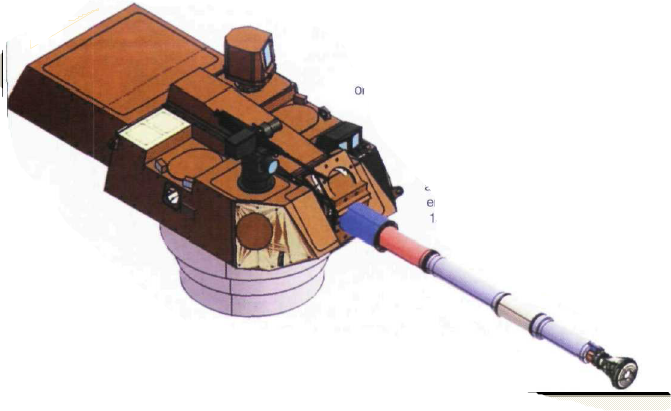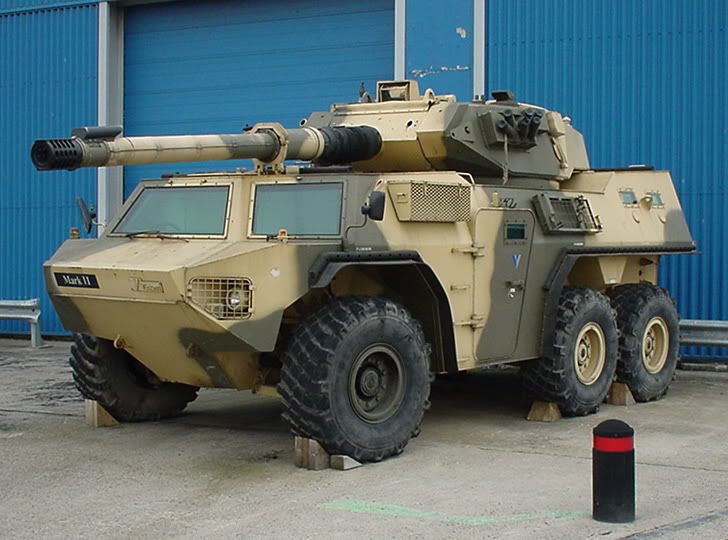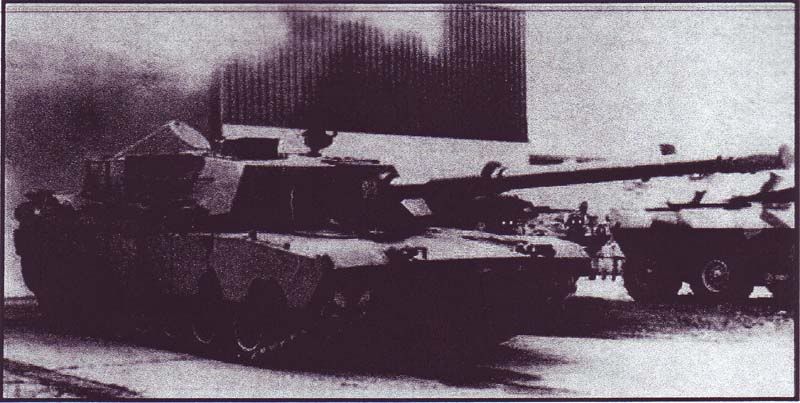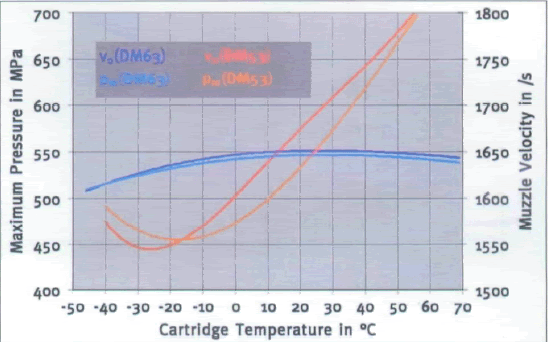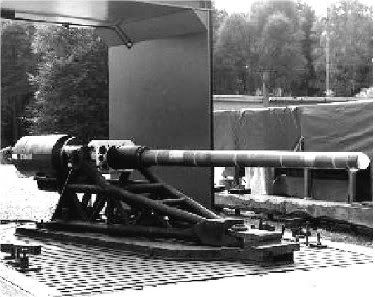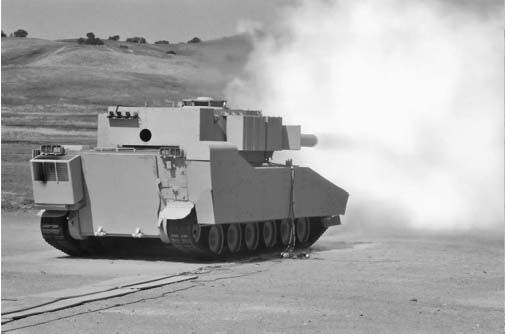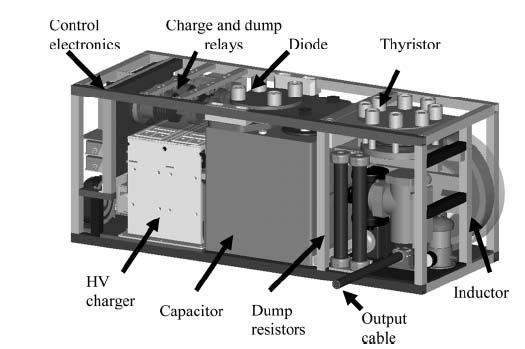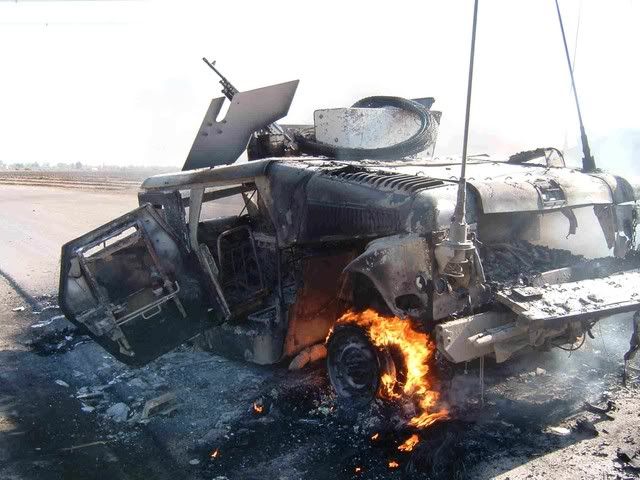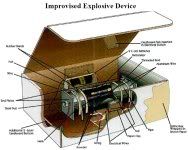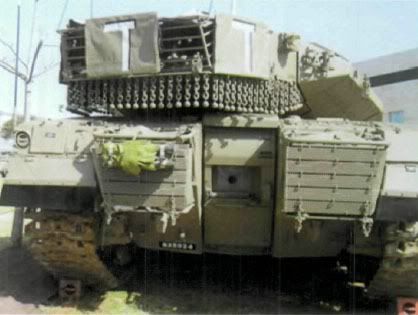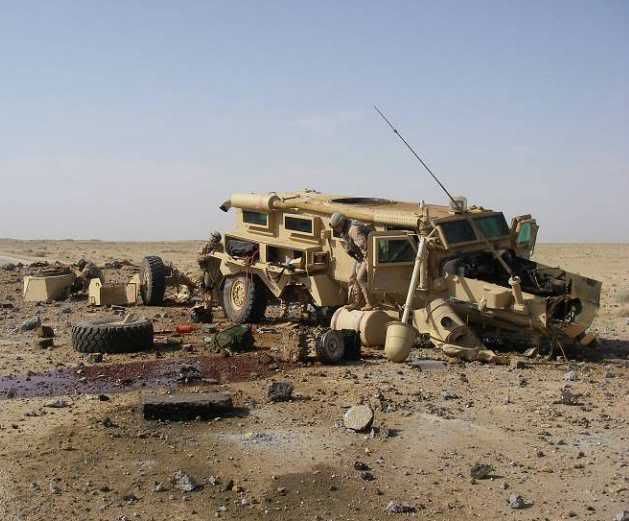Problems Encountered with Higher Caliber Tank Guns
According to estimations from the mid-80s, the future soviet tank (FST-3) had enough armor to defeat anti-tank ammunition fired from a current 120mm powder gun. Future NATO tank guns would have to produce 18MJ worth of energy at the muzzle, for the penetrator of an armor piercing fin-stabilized discarding sabot (APFSDS) – double the energy produced by the Rheinmetall 120mm L/44 gun mounted on the Leopard 2 and M1A1 Abrams (produced in the United States as the M256).
1 A number of solutions were proposed, including the use of a 140mm solid propellant gun. There were a number of more extravagant solutions, including electromagnetic acceleration and electrothermal-chemical ignition and control. Despite the wide array of options in regards to enhancing vehicle lethality, the easiest and fastest solution remains the adoption of a 140mm powder (solid propellant) tank gun. In fact, most tank-producing nations have developed a number of 140mm cannons for use in future tanks and 140mm guns have been fitted into existing turrets; however, no nation has seriously considered the use of a 140mm gun. Since the late 70s tank enthusiasts have been predicting the introduction of larger caliber weapons. Yet, no Israeli Merkava tank has been seen with a 140mm tank gun
2 and no Russian tank has been seriously developed with a 152mm piece.
3 On the other hand, development continues with electrothermal-chemical technology for use in tank guns, and some still see electromagnetic propulsion as the future in tank armament.
Nevertheless, calibers larger than 120mm are still enticing and see extensive use in NationStates. Especially popular are either the 152mm or 155mm calibers. The use of both these calibers has been popular ever since the publication of multiple articles giving estimations on the armament of the Black Eagle – a T-80U turret upgrade – and the future T-95.
4 It should be noted that the Black Eagle turret mounts a solid propellant 125mm tank gun, probably the 2A46M-4 tank gun adopted on the T-80UE.
5 The T-95s armament, admittedly, remains a mystery, along with the rest of the tank. There have been actual attempts to mount a larger caliber tank gun into existing tank turrets, although very few details are published about these projects. The Swiss mounted a NATO 140mm gun into a Panzer 87
6 and the Russians have recently introduced a long 152mm cannon into a T-80, with some turret extensions in the front and a bustle in the rear. It’s possible that there have been prototypes of a 140mm armed main battle tank in the United States of America, although the main battle tank program was canceled in 1995.
7 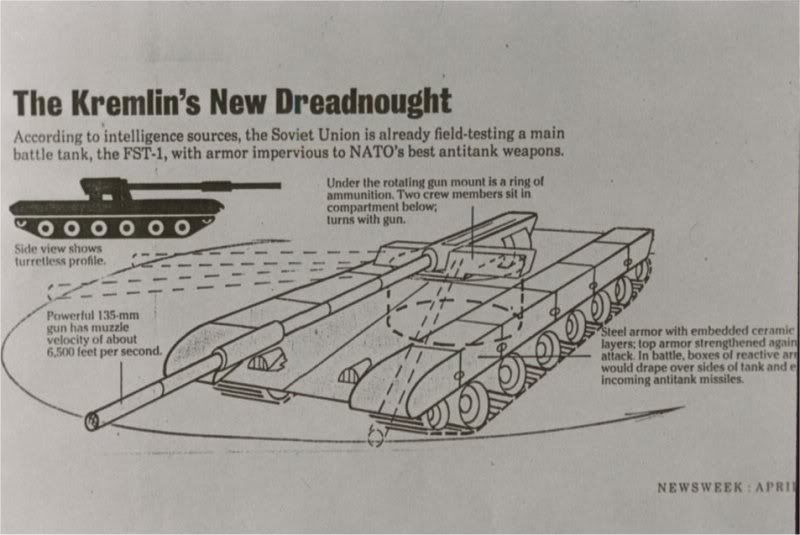 A Newsweek article with concept art of the FST-2
A Newsweek article with concept art of the FST-2The lack of information on the development and testing of tank guns of a caliber between 130mm and 160mm admittedly makes it difficult to understand the consequences of implementing a gun of this caliber. These negative side effects of increasing lethality through increasing caliber only accumulate as the caliber gets larger – i.e. the effects of using a 155mm gun are much greater than those of using a 140mm gun. Consequently, oftentimes the use of these heavy cannons in tank designs in NationStates doesn’t accurately portray the negative side effects. Although this isn’t necessarily the author’s fault, it’s a mistake that should be corrected. This informative is an attempt to explain the advantages, as well as the various disadvantages, of larger caliber tank armaments. These disadvantages include increased turret volume, potential increase in hull volume and increase in weight. The informative’s argument is that these increases in volume and weight do not justify the increased lethality, especially given that there are many alternative options in tank gun technology.
140mm+ caliber lethalityThe original goal, as stated above, was to achieve muzzle energy of 18MJ. In tank armor penetration by kinetic energy (armor piercing fin stabilized discarding sabot – APFSDS) the principle (and the simplest) factors which effect penetration are velocity and mass.
8 Therefore, the simplest equation which can given an idea of a round’s penetration is KE = ½m •v
2. With an increase in muzzle energy you can either increase mass or velocity of the round. With a decrease in mass there is an increase in velocity, and the same is true vice versa. This greater muzzle energy is established through the use of larger propellant charges – larger barrels can withstand larger charges because the created pressure during gas expansion is distributed along a greater surface area. The idea is the same in high-pressure guns, except that special materials are used to withstand higher pressure in the breech and barrel.
9 Although the common goal is 18MJ, there is nothing that suggests that the muzzle energy produced by a 140mm caliber tank gun is and always will be 18MJ. The performance of a 140mm gun, and any gun, is based only upon the construction quality of the barrel, breech and round and the quality and volume of the propellant. In fact, a 140mm gun may produce only 16 or 17MJ of energy.
10 According to Rheinmetall, a 140mm tank gun produces energy of 23MJ at the muzzle. However, only 14MJ are relevant to the penetrator itself.
11 Fired from a NATO 140mm gun, a tungsten heavy alloy (WHA) penetrator with a length to diameter (L:d) ratio of will penetrate roughly 830mm of rolled homogenous steel after penetrating a 400mm ceramic module (the ceramic is not necessarily encased in steel).
12 Due to the considerable power achieved by the 140mm powder gun and the availability of the technology, it was thought as early as 1989 that the 140mm would be used as a stop-gap solution.
13 The amount of technology demonstrators of this caliber make it apparent that at one point in time it was a real solution. The U.S. XM291 solid propellant gun showcased a breech which could fit both a long 120mm cannon and a 140mm cannon if it was necessary in the future.
14 However, today the 140mm gun is no longer considered a real option by any NATO tank-producing country.
15 Instead, the Germans introduced the new 55-caliber long 120mm tube and the DM53 APFSDS in the KWS I upgrade of the Leopard 2A5 (the 2A4 to 2A5 upgrade is the KWS II, which increases the depth of the front armor array).
16 The XM291 120mm tube is also longer than the current M256 (a copy of the Rheinmetall 120mm L/44), but was never implemented and there is still no gun modernization program in sight.
17,18 British advanced tank armament mounted on a Centurion chassis.
British advanced tank armament mounted on a Centurion chassis.Although the 140mm tank gun, and any caliber above 120mm, offers better ballistics than existing 120mm solid propellant guns against current and future armored threats, the large-caliber gun was a solution based on the lack of time.
19 Prior to the fall of the Soviet Union the FST-2 and FST-3 were considered threats beyond the capabilities of NATO tanks of that time, including the M1A1 and Leopard 2. The M1A1HA (heavy armor) upgrade was introduced at a cost of around $1 billion due to the threat posed by the theoretical FST-2.
20 Beginning in 1988, there were 1,328 M1A1HA tanks manufactured and another 834 with increased armor protection (M1A!HA+).
21 However, the Soviet Union fell in 1991 without producing either the FST-2 or the FST-3. Thankfully, the fall of the Soviet Union has allowed us to take a closer look at the advantages of a 140mm gun. The pace of development has decreased, along with decreased budgets for research and design work on advanced tank armaments. Instead, work has been put into upgrading the lethality of light armored fighting vehicles for deployment in peace keeping operations. This has given Western nations a chance to develop next-generation armaments in the 120mm caliber. However, if NATO wants to design a future tank with MLC 60 or 50 as its weight limit, tank designers will have to look for a smaller caliber solution.
DisadvantagesEven with a decrease in the ammunition held, the volume of thirty 140mm rounds would be roughly 3.05m
3. An individual 140mm APFSDS could weigh as high as 40kg, while a 120mm APFSDS weighs between 19 and 23k. This means that thirty 140mm rounds would weigh roughly 1,200kg as compared to the 830kg of a forty round 120mm ammunition load.
22 Rheinmetall’s 120mm L/44 weighs 1,190kg, while the L/55 version increases the weight to 1,347kg. GIAT’s (now Nexter) 120mm F1 weighs 2,800kg and the M256 weighs 1,901kg. The high-pressure MG251 weighs roughly 3,300kg.
23 However, let’s take Rheinmetall’s L/55 and the XM291 as the more recent in solid propellant technology (the XM291 saves about 600kg worth of weigh as compared to the M256). In comparison, a 140mm gun (including the trunnions) would weigh over 3,200kg. It would also require a breaking force of up to 1,200KN.
24 In gun weight and ammunition weight alone the increase in weigh would be about 1.5 metric tons. The necessary increase in turret volume to allow a depression of the main gun to anywhere between 7º and 10º could cost another 5 to 6 metric tones in weight. The increase in gun caliber would also result in an increase in the size of the mantlet, resulting in another increase in armor volume and weight. In fact, a total weight increase due to the larger turret armor volume could amount to up to over 10 metric tons.
25 Insofar, the total weight increase amounts to closer to 15 metric tones. Taking the weight of the Leopard 2E of around 63,000kg
26, it would mean that based on what we have figured out a 140mm tank with the same proportions of mobility, protection and lethality would weigh almost 78,000kg. In order to keep within the maximum acceptable ground pressure of 9N/cm
2 the chassis would also have to be enlarged in both width and length. The increase in weight of a 140mm gun, with a proportional increase in protection and mobility, would be a far greater difference to existing main battle tanks than is the difference between the M60 (52,000kg
27) and the M1A2 (roughly 64,000 to 65,000kg
28).
The maximum width of the vehicle is dictated by what is allowed by a nation’s rail system. The amounts of distance between any given points in the majority of nations in NationStates make travel by tank track improbable. NATO armies, and their allies, have always used rails, while the Soviets have always had the philosophy that a tank should be prepared to travel great distances on its own tracks. But, the Soviets have traded other aspects of their tanks for increased engine life. In terms of track life, the AMX-30’s tracks could travel an average of 5,000km.
29 Track life of current tracks is most likely similar, as no major innovations with track durability have really been made. Fuel considerations make travel by truck over long distances as improbable as travel by one’s own track. Currently, Spain’s truck transport can fit a single Leopard 2E or two Pizarro infantry combat vehicles. Assuming that a truck was made to carry a much larger main battle tank it would still only be able to carry one. Taking into consideration tank fleets in NationStates, let alone distance to travel, the amount of trucks required to transport armor material across the country would exceed a country’s capability. The width of a nation’s highway lane also plays apart in the allowable width of a tank. The use of multi-lane highways solves the problem to a certain degree, but doesn’t get rid of it. The costs of constructing a multi-lane highway network across a country the size of the Soviet Union would not allow a nation to procure an expensive main battle tank! On a more serious note, it’s not realistic to assume that a nation can change the width of its railroad tracks to accommodate a larger main battle tank. Therefore, there exists a physical limit on the width of any main battle tank.
Battlefield mobility of a tank is dictated by the relationship between the length of the track touching the ground and the width between the centerlines of each track. Ratios of over 1.5 will disallow a tank from making quick turns, and may even cause a crew to damage or break the tank’s transmission. Given the maximum allowable gun pressure we know that there is a maximum allowable weight per width. Width is hard to increase due to road and rail constraints. Consequently, one could say that there is a maximum weight limit of a tank. Taking into consideration Western rail gauge, this limit seems to be MLC 70 (roughly 64,000kg). Therefore, a 78,000kg tank would find it hard to strategically deploy long distances, not to mention the ability to deploy overseas!
Even so, 78,000kg doesn’t take into consideration several more weight augmentations. An increased weight requires increased engine volume and fuel volume. Fuel tanks, within themselves, constitute a substantial increase in weight due to protection requirements. It would be nearly impossible for a human loader to load 40kg ammunition in the ideal loading time of 5 to 7 seconds, and therefore an automatic loader would be necessary. Nevertheless, the weight of the ammunition would require a loading system of at least 600kg, so there are no weight savings in that area. And, we are assuming an armor protection equal to current tanks. Ideally, a 140mm armed tank would also have an increase in armor protection. That constitutes a large increase in weight. 35 metric tons of the Abram’s weight is armor,
30 meaning we’re looking at a weight increase of armor by a factor of at least ten metric tons. In terms of aerial density armor protection can weigh up to 4 metric tones per meter.
31 Therefore, if current lethality and protection patterns are kept the 140mm armed tank could weigh well over 80,000kg.
 A comparison chart, offered by Rheinmetall, with three different Rheinmetall tank armaments.
A comparison chart, offered by Rheinmetall, with three different Rheinmetall tank armaments.Taking weight into consideration, one should also figure in logistics. The cost of logistics can be related to as the eighth power of the tank’s weight (for a tank of the weight we’re discussing).
32 Therefore, the logistics slice of a 80 ton tank would be roughly 5 times greater than an existing 63 ton tank! And this fails to mention the cost of construction of each individual tank. The cost considerations in manpower, man hours and logistics resources are exponentially greater than those in a modern real-life main battle tank. The use of advanced technologies, such as computerized active hydropneumatic suspensions and computerized transmissions will add to the cost of the tank, but this fact remains the same in all tank design.
Unconventional SolutionsIf weight is the principle cause of the problem, any user of a large caliber tank gun should look into solutions which reduce weight. Nominally, this means unconventional turret designs. As an example, Jordan’s King Abdullah Development and Design Bureau (Kaddb) revealed the new Falcon turret at Idex 2001. The turret is designed to reduce he frontal profile as much as possible (although, it should be known that the smaller the frontal profile of the turret, the larger the sides will be
33), as well as weight, and is an upgrade option for Arab M60 Patton tanks and Jordan’s own Challengers (Al Husseins). The two man turret crew (the driver is still in the hull) is seated in the turret basket, reducing the required amount of protection in the front. By reducing the front turret profile and moving the position of the crew Kaddb radically decreased the armored volume of the turret reducing weight just as dramatically. However, moving the crew into the turret basket results in disallowing the tank commander from a good panoramic view – in essence, he’s commanding the tank based on computers. Furthermore, the Falcon turret’s autoloader only holds eleven rounds (with plans to increase to sixteen), compared to the forty rounds held by the M1 Abrams
34 – the Falcon turret is wedded to Ruag’s 120mm compact tank gun (CTG), which weighs 2,600kg.
35 Reducing turret volume, as shown by the Falcon turret upgrade, is always an option and may result in a hefty reduction of weight, given the reduction in armored value. As a reference, assuming full nuclear, biological and chemical (NBC) protection each crew member will require about .4m
3 and the loader .8m
3 to achieve the fastest loading rate possible (as close to 5 seconds as possible)
36 and to this we add another 10% for crew comfort and freedom of movement. So we can come to the conclusion that a conventional four man crew requires just about 2.5m
3 in terms of volume. This is even larger for tanks which attempt to move the driver into the turret, since that driver now needs to counter-rotate meaning his required volume will be based on the spine of his seat and not on his center of mass, effectively doubling the required volume. A three man crew, however, requires less than 2m
3 plus the required volume for the tank autolading system. In terms of turret volume, however, we’re talking about a volume reduction of a little bit over 1m
3. Jordan pays the price in the weight of its gun (heavier breech) and the relatively small ammunition hold, and the inability to replenish the autoloader’s ammunition under armor (instead, the crew has to replenish from the outside). One can also reduce the crew from four or three to two, reducing fighting compartment volume from 10m
3 to around 3m
3.
37 There are, as always, important considerations including the requirement to train multiple crews per tank – a two-man crew will not be able to successfully guard the tank at night, or maintain the tank on their own. Furthermore, each crew member now has a larger share of the tasks.
38Other turret options include the cleft turret and the externally mounted gun. The former reduces turret volume, and the latter almost gets rid of it completely (you only have to armor the breech against small arms). Both have huge ballistic weaknesses, although if you can guarantee the first-round and the necessary lethality of that first-round then ballistic weaknesses are almost irrelevant.
However, it’s questionable whether a 140mm solid propellant gun or even a 155mm solid propellant gun can penetrate the armor of a NationStates tank on the first hit. Let’s say that a M829A3 APFSDS scaled up to be fired from a 140mm gun (larger mass) has a penetration of roughly 1,200mm of RHAe (rolled homogenous armor equivalent); this is still insufficient to penetrate a large number of tanks with over 2,000mm RHAe along the front 60º arc. Always hitting the side armor is unlikely, as that’s what the Israelis did during the Six Day War yet close to 35% of the hits are registered to hit the tank front 60º. During the Yom Kippur War near 55% of the hits were registered on the front 60º and during the Second World War (the most ‘copied’ war of NationStates) this percentage increases up to the 70% mark!
39 This doesn’t even begin to take into consideration the armor protection between the 60º and 90º protection arc in main battle tanks, or up to the 120º degree arc! The Black Eagle, for example, has explosive reactive armor integrated into the front 120º arc of the turret.
40 One source claims a turret armor protection of up to 880mm for the Black Eagle, although if an improvement in side turret front armor over the T-80U is assumed then we’re looking at more than 400mm worth of protection against kinetic energy (KE) threats in terms of conventional armor.
41 If Kontakt-5 provides 300mm worth of equivalent armor against APFSDS,
42 then it’s possible that the Black Eagle has a side turret front protection level of over 700mm RHAe, and possibly up to 800mm RHAe. That means that the Black Eagle may have a side turret front armor protection level close to the front protection level of current generation main battle tanks. Improvement in passive armor thickness and mass efficiency, as well as improvements in explosive reactive armor, might mean an even higher level of protection. Although the Black Eagle is not going to be adopted by the Russian Army, it serves as an example as what future tanks can achieve (like the T-95).
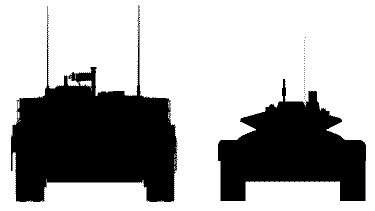 A comparison between the T-95 and the M1 Abrams in size.
A comparison between the T-95 and the M1 Abrams in size.For example, with a weight increase of just 1.5 to 2.5 metric tons
43 the M1A2 SEP can adopt a heavy explosive reactive armor suite increasing protection by about 300mm RHAe. This would increase effective protection along the front 60º arc to over 1,200mm RHAe and the side turret front armor to about 650mm RHAe.
44 The most important consideration to take into consideration is that Kontakt-5 explosive reactive armor proved to completely stop the M289 APFSDS.
45 Although the new M289A3 APFSD was specifically designed to defeat Russian explosive reactive armor, new reactive armor concepts may prove more difficult to puncture. For example, Ukraine’s Nozh explosive reactive armor uses a series of explosively formed penetrators to literally cut the APFSDS into several pieces. However, Nozh suffers from the disadvantage of relying on a dramatic impact angle. Regardless, the point remains that the efficiency of explosive reactive armor shouldn’t be measured in RHAe as opposed to its ability to break the incoming APFSDS.
This takes us back to turret design. If one can reduce armor volume to reduce weight, one can rearrange previous armor in order to increase the thickness of the surface area left. In other words, a tank with a narrow mantlet turret can have an increased thickness in armor for no penalty in weight (you just don’t lose the weight). So, if by maximizing line of sight thickness of the armor, like the Leopard 2A5, a future tank can achieve armor protection of around 1,500mm RHAe then a 140mm gun is incapable of penetrating the frontal arc of that tank. Of course, an electrothermal-chemical gun might be incapable as well, but it doesn’t have the added weight penalties!
Technological solutionsThere are advances in tank technology which may allow for weight savings. The German MTU 880 series of diesel engines produce around 215kW/m
3, a substantial improvement over prior diesels – it is 35% smaller in volume and 14% lighter in weight.
46 In other words, the MTU 880 produces 288hp/m
3, which means that to provide a hp/t ratio of at least 20:1 the engine bay would require at least 5.6m
3 (based on a 80,000kg tank). This would produce 1,600hp, while a 2,000hp engine would require about another 2m
3 worth of volume. MTU claims that the MTU 890 series engine is 50% smaller than the MTU 880 series in terms of volume
47, which to me says that the MTU 890 can produce 430kW/m
3, or that a 1,600hp engine bay would require a volume of about 2.8m3. There are claims that the MTU 890 produces 1.2MW/m
3,
48 but these are highly suspect – nevertheless, the lack of an alternate source disallows me from discarding the figure. Nevertheless, use this latter figure as carefully as possible; else we might have another buckyball trend! Regardless, new diesel engines provide a heavy savings in weight, forgive the pun.
There are also weight savings in the areas of future transmission systems, and the use of certain materials in vehicle and armor construction.
49 Alternate armor could be a consideration, or even the reduction of armor protection to save mobility. This concept was the guideline for the French AMX-30
50 and the German Leopard 1,
51 and may have been the guideline for the U.S. future main battle tank (FMBT) which aimed for a combat weight of 20 metric tons.
52 Of course, the problem isn’t as severe as it is for a twenty ton tank with the goals of a sixty ton tank, but there are similarities. While technological breakthroughs may save some weight, any heavy NS tank design that scales up with current technology will have to rely more on ingenuity than on technology. Cost should also be taken into consideration when using high technology. Currently, more than 60% of a tank’s cost is the high technology and electronics used.
53 If a M1A2 costs $5.4 million to produce
54 then $3.24 million is applied to electronics. That said, any future tank with the most advanced in terms of electronics and high technology to save weight or enhance features that now have to support greater weight may cost over $10 million. These systems include electric transmission, active hydropneumatic suspension and advanced remote controlled weapon stations. There’s also a high cost in the technology provided to manufacture certain parts of the future tank (like advanced armor).
AlternativesThere are great deals of alternatives to 140mm guns in smaller calibers which can be explored.
55 This includes the more well known electrothermal-chemical technology, which will provide the necessary energy to match the muzzle energy of a 140mm gun. Unfortunately, this comes with the added costs. Technologies which may be applied to the future, assuming advances in energy storage and efficiencies, are electromagnetic propulsion systems – for example, rail guns and coil guns. However, these are not solutions to be considered for a long while. Simpler alternatives are improved solid propellant guns. The 120mm L/55 firing the DM63 can penetrate as much as 900mm of rolled homogenous steel,
56 while the penetration of the same gun firing the M289A3 may exceed 1,000mm of penetration! Advanced solid propellants might also offer short-term improvements in lethality, with smoother burn patterns and higher amounts of energy per volume. The alternatives are out there, they just require some researching!
 Swiss Pz87 with a 140mm gun.
Swiss Pz87 with a 140mm gun.On the other hand, advances are in the form of the ammunition. Rounds like the XM943 can engage tanks at long ranges and defeat them by engaging the roof armor with an explosively formed penetrator
57 – in other words, a gun-launched long-range anti-tank missile. Rounds like SADARM
58 can drop multiple submunitions on a target, increasing chances of penetration. This type of guided ammunition greatly increases the engagement ranges of tanks and questions the requirement of heavy armor. For example, a 155mm howitzer can knock out one or more tanks using submunitions while those tanks can’t even respond. The introduction of indirect fire munitions may merge the roles of heavy armor and self-propelled artillery, although the former could never provide the necessities for occupation (the lack of heavy protection) while the latter is simply too expensive to replace the artillery vehicle. Indirect fire munitions may also argue in support of large guns – the larger the gun, the larger the round the more submunitions it can hold. However, it also argues for the use of smaller caliber guns. A tank designed with a 105mm high velocity gun has superior mobility than larger variants, may have an equal level of protection and can engage enemy tanks at non-line of sight (NLOS) ranges. Its armor protection would be enough to protect it against infantry armaments such as light anti-tank rockets or top-attack missiles through the use of explosive reactive armor and an active protection system. It would also be cheaper and a nation could deploy more for the same costs.
In the end, the use of alternatives is up to the creator. There are always design specifications and operational requirements to take into consideration. Each creator might also have different opinions and perspectives. It’s all part of the game. However, it’s important to always take into consideration the advantages and disadvantages of any given piece of equipment – including large caliber tank guns.
Notes
1. Orgorkiewicz, R.M., Future Tank Guns, Part I: solid and liquid propellant guns, Janes International Defense Review, 12/1990, p. 1377
2. Eshel, David, The Merkava Mk. 3 Defies Its Critics, ARMOR Magazine, 1 May 2000, p. 17.
3. Warford, Jim, The Resurrection of Russian Armor: Surprises from Siberia, ARMOR Magazine, 1 September 1998, p. 32.
4. Ibid. pp. 32-33.
5. Baryatinskiy, Mikhail, Main Battle Tank T-80 (Russian Armor), Ian Allen Publishing, 2007, p. 93
6. Panzer 87 refers to the name of Swiss produced Leopard 2A4s.
7. Acquisition of the Advanced Tank Armament System, Department of Defense, 28 February 2001
8. Simpkin, Richard E., Tank Warfare: An analysis of Soviet and NATO tank philosophy, Brassey’s, 1979, p. 90.
9.
http://www.rheinmetall-defence.com/index.p...47&lang=3&pdb=1 10. Diamond, P., Electro Thermal Chemical Gun Technology Study, MITRE, March 1999, p. 5.
11. Kruse, Dr. Josef and Weise, Dr. Thomas, Studies on Germany’s Future 140mm Tank Gun Systems – Conventional and ETC -, 34th Gun & Ammunition Symposium & Exhibition, 26 April 1999, p. 12.
12. Horst, Albert W., et. al., Recent advances in anti-armor technology, American Institute of Aeronautics and Astronautics, Inc., January 1997, p. 18.
13. Pengelley, Rupert, A new era in tank man armament: the options multiply, Janes International Defense Review,11/1989, p. 1522.
14. Ibid.
15. Sharoni, Asher H. and Bacon, Lwarence D., The Future Combat System, Part Two: Armament, ARMOR Magazine, September 1997, p. 29.
16. Schnellbacher, U. and Jerchel, M., Leopard 2 Main Battle Tank 1979-1998, Osprey Publishing, pp. 24-36.
17. Hilmes, Rolf, Arming Future MBTs – Some Considerations, Military Technology, December 2004, p. 76.
18. It should be considered that there exists plans to integrate the XM291 or XM36 tank guns into existing armoured vehicles, and the XM36 will be used in the future combat system line-of-sight gun vehicle. This technology may be spiralled down to the M1 Abrams in a M1A3 upgrade. Dyvik, Jahn, et. al., Recent Activities in Electrothermal Chemical Launcher Technologies at BAE Systems, IEEE Transactions on Magnetics, January 2007.
19. Sauerwein, Brigitte, Rheinmetall’s NPzK, Janes International Defense Review, 2/1990
20. Warford, Jim, The Resurrection of Russian Armor: Surprises from Siberia, ARMOR Magazine, 1 September 1998, p. 32.
21. Green, Michael, M1 Abrams at War, Zenith Press, 2005, pp. 25-28.
22. Hilmes, Rolf, Aspects of Future MBT Conception, Military Technology, 30 June 1999.
23. Maxwell, David, New Tanks For Old, Part II: Tank Top Upgrades, Armada International, June 2002, p. 82.
24. Hilmes, Rolf, Aspects of Future MBT Conception, Military Technology, 30 June 1999.
25. Simpkin, Richard E., Tank Warfare: An analysis of Soviet and NATO tank philosophy, Brassey’s, 1979, p. 137.
26. The Osprey book only gives the weight of the Leopard 2A4. The Leopard 2E is, in any case, more or less the same as the Leopard 2A6M and the Swedish Strv. 121 (the Swedish vehicle doesn’t offer the L/55 main gun, however). Candil, Antonio J., Leopard 2 daneses en Córdoba, Fuerzas Terrestres, Vol. 3º, N.º 36, Año III, p. 62.
27. Lathrop, R., and McDonald, J., M60 Main Battle Tank 1960-91, Osprey Publishing, 2003, p. 28.
28. Green, Michael, M1 Abrams at War, Zenith Press, 2005, p. 31.
29. Ogorkiewicz, R.M., AMX-30 Battle Tank, Profile Publications Limited, December 1973, p. 12.
30. Zahn, Brian R., The Future Combat System: Minimizing Risk While Maximizing Capability, USAWC Strategy Research Project, p. 24.
31. Hilmes, Rolf, Aspects of Future MBT Conception, Military Technology, 30 June 1999.
32. Simpkin, Richard E., Tank Warfare: An analysis of Soviet and NATO tank philosophy, Brassey’s, 1979, p. 103.
33. Ibid., p. 141.
34. Huntiller, Mark, New Turret a New Tank Make?, Armada International, March 2004, p. 22. Information on Falcon turret is from this article.
35. Maxwell, David, New Tanks For Old, Part II: Tank Top Upgrades, Armada International, June 2002, p. 82.
36. Simpkin, Richard E., Tank Warfare: An analysis of Soviet and NATO tank philosophy, Brassey’s, 1979, p. 133.
37. Hilmes, Rolf, Aspects of Future MBT Conception, Military Technology, 30 June 1999.
38. Sharoni, Asher H. and Bacon, Lwarence D., The Future Combat System, Part Three: Powering the new system, ARMOR Magazine, January 1998, p. 37.
39. Held, Manfred, Warhead Hit Distribution on Main Battle Tanks in the Gulf War, Journal of Battlefield Technology, March 2000, p. 7.
40. Baryatinskiy, Mikhail, Main Battle Tank T-80 (Russian Armor), Ian Allen Publishing, 2007, p. 93
41. Lakowski, Paul, Armor Technology.
42. Robb McLeod, Modern Explosive Reactive Armours, Russianarmor.info, 1998.
43.
http://www.drdo.org/pub/techfocus/feb04/explosive.htm44. M1A2 armor estimates taken from: Lakowski, Paul, Armor Technology.
45. Warford, Jim, The Resurrection of Russian Armor: Surprises from Siberia, ARMOR Magazine, 1 September 1998, p. 31.
46. Hilmes, Rolf, Aspects of Future MBT Conception, Military Technology, 30 June 1999.
47.
http://www.mtu-online.com/en/appl/applmili/applmilicomb/48. Compact Power Plants, DaimlerChrysler High Tech Report, February 2004.
49. Armor will be discussed in a future Informative.
50. Ogorkiewicz, R.M., AMX-30 Battle Tank, Profile Publications Limited, December 1973, p. 6.
51. Jerchel, Michael, Leopard 1 Main Battle Tank 1965-1995, Osprey Publishing, 1995, p. 3.
52. Zahn, Brian R., The Future Combat System: Minimizing Risk While Maximizing Capability, USAWC Strategy Research Project, p. 13.
53. Simpkin, Richard E., Tank Warfare: An analysis of Soviet and NATO tank philosophy, Brassey’s, 1979, p. 192.
54. Joseph, Mallika, Arjun: India’s Main Battle Tank, Institute of Peace and Conflict Studies, June 2006, p. 2.
55. To be explained in greater detail in future Informatives.
56.
http://63.99.108.76/forums/index.php?showtopic=1851157. Held, Bruce J., Tomorrow’s Smart Tank Munitions, ARMOR Magazine, March 1995, p. 22.
58.
http://www.globalsecurity.org/military/sys...ions/sadarm.htm




